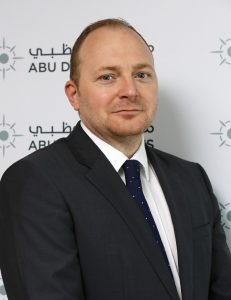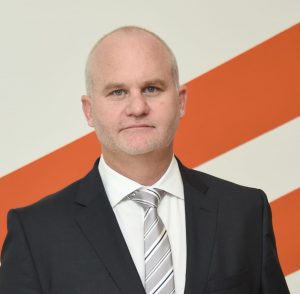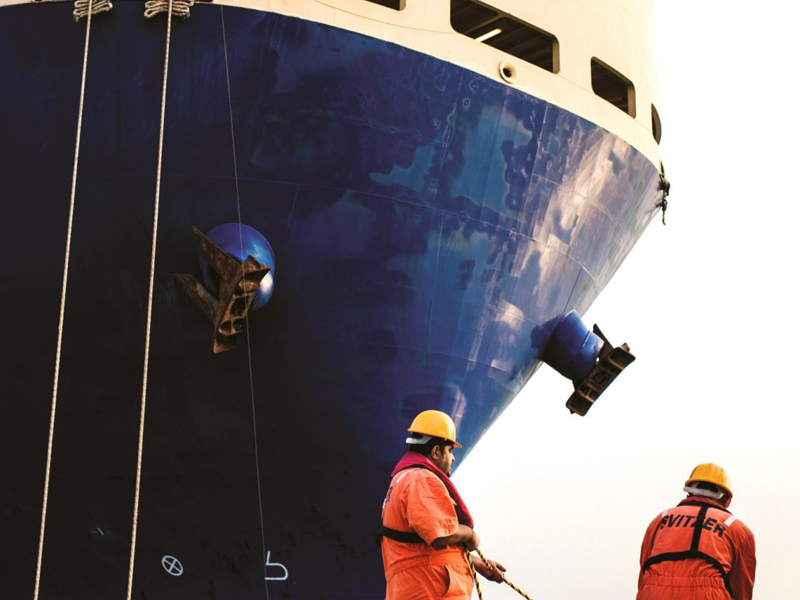Smooth sailing: Middle East and its ports
Trade, technology, and services— the Middle East’s ports are taking an all-rounded approach to the tasks at hand.
Containerisation and port privatisation have fundamentally changed the market environment that shipping lines and ports operate in. Shipping lines seek dedicated container terminals in ports, with the aim to support their objective of widening their scope in the supply chain.
Mark Hardiman, managing director – APM Terminals Bahrain, says: “It leads to vertical integration between shipping lines, port operators, and indeed also and very importantly, our landside customers. A true partnership between these parties ensures simplification of supply chains from a customer’s perspective, resulting in cost reductions and efficiency improvement.”
All of the GCC countries have been investing heavily in ports and logistics facilities, with Expo 2020 in Dubai, Saudi Vision 2030, and Oman Vision 2040 viewed as key drivers, and these have caught the attention of international investors, in particular from China.
“If we take China, about 60% of China’s exports to regional markets pass by the UAE,” notes Ross Thompson, chief commercial and strategy officer, Abu Dhabi Ports. “The country is the UAE’s second largest trading partner and the biggest exporter to the UAE. Taking this into account, we have signed several agreements with leading Chinese companies to reinforce Abu Dhabi and the UAE’s prime position as part of the Chinese Belt and Road initiative. These partnerships have paid off.”
In July 2017, Abu Dhabi Ports signed an agreement with the Jiangsu Provincial Overseas Cooperation and Investment Company Limited (JOCIC) for the latter to occupy and develop approximately 2.2sqkm of the available free zone space in Khalifa Port Free Trade Zone. A total of 15 companies have since signed lease agreements for land with investments totalling $1bn.
Thompson adds: “We want and are following the same direction with other partners such as India, Pakistan, and Russia, among others, through a wide range of activities from business roadshows, special promotions, the signature of MoUs aimed at raising awareness about the opportunities offered by KIZAD and KPFTZ, the largest free zone in the Middle East, to participating in key international trade shows.”
Hardiman takes a similar stance: “Asia continues to be the biggest market for imports and exports in the GCC, of which China plays a significant role. This is expected to grow as the GCC countries also are seemingly increasing their cooperation with Asian countries and thereby companies in Asia leading to increased trade flows. African and Latin American destinations are also key markets of developing trade with the GCC.”
Technology
From online booking tools to lock scheduling systems, today’s ports have a wide range of these technological tools at their fingertips – all with the goal to improve safety, accessibility, and efficiency. The Middle East’s ports are no different.
“Technology used in APM Terminals continues to evolve to match with the changing operational, safety, and customer needs,” mentions Hardiman. “We have assets in our portfolio terminals which employ a high degree of automation, some being almost fully automated. In Bahrain, we are constantly assessing which of this technology makes sense for us, and indeed some systems have been developed and even pioneered by us locally with global support from our HQ – an example being our Load Collision Prevention System (LCPS) which prevents container knock downs in container yards which has statically been one of the most dangerous places in container terminals.
“Another example is “LIFT” which is our new online customer portal which we are busy launching. APMT Bahrain was chosen as a pilot site for APM Terminals globally. We are in the process of performing final customer testing with this system with full deployment planned for July 2018.”
Since the inauguration of Khalifa Port in 2012, Abu Dhabi Ports’ flagship port has been recognised as one of the most modern and technologically advanced ports in the region as well as being a success story as one of the UAE’s world-class infrastructure projects.

Ross Thompson, Abu Dhabi Ports
“It was, let’s not forget, the first semi-automated port in the Middle East,” emphasises Thompson. “We keep deploying the latest technology to increase the efficiency of our operations. For example, the time that a truck takes to pick up a container and leave the port towards their next destination – port gate automation– has decreased from 40 minutes in 2012 to just 12 minutes now, thanks to the port automation technology, making the terminal one of the most efficient in the region.”
Maqta Gateway, a subsidiary of Abu Dhabi Ports, offers ports, exporters, importers, shipping lines, customs and government agencies a single point of contact and real-time information at any time of the day significantly enhancing processing times and communication procedures. The system helps ensuring smooth transport and logistics operations using the latest technologies such as blockchain which acts as an open digital ledger that can be used by trade actors to record and extract details regarding transactions with greater security, transparency and efficiency.
“Digitalisation is without any doubt one of the most important trends that is already shaping the future of our industry,” comments Thompson. “This is especially important if we take into account that our industry is responsible for moving up to 95% of the food we eat, the clothes we wear, and the computers we work with.”
As the shipping and logistics industry rapidly adopts new technologies, disruptive technologies such as blockchain can offer trade community members significant benefits. According to the World Economic Forum, potential savings range from 20% of the total physical transportation costs, amounting to $1tn addition to global trade.
“Through our subsidiary Maqta Gateway, we are working to get ahead of the curve. We have developed and launched our own blockchain technology – Silsal. Through Silsal we will be offering the trade community secure and integrated access to blockchain technology, with the added value of cost and time savings through real-time track and trace, reduction in paperwork and ease in extracting vital information to receive live updates.
“Not only have we introduced our own blockchain offering, but we have also invented our own form of digital identity. This will eliminate the need for access through passwords which can often be a security risk. This achievement will help to further augment Abu Dhabi’s position as a centre for innovation in logistics and trade. The future of trade will be definitely in harnessing those disruptive trends for the benefit of customers.”
Worker Safety
Cargo handling methods have evolved over the years. Technical developments, including the introduction of increasingly sophisticated cargo-handling equipment with greatly increased capacity and reach, has played a noteworthy part. While many of these changes have resulted in significant improvements for the safety of port-workers, some changes have introduced new hazards and port work is still regarded as an occupation with very high accident rates.
“Reducing the number of incidents and minimising lost productivity is one of our priorities,” remarks Thompson. “This is why we have been putting in place measures that have resulted in Khalifa Port becoming a beacon for health and safety best practice in the region. These initiatives include: investing in technologies’ and engineering solutions to automate operations and reduce machinery and human interfaces; employee engagement schemes rewarding employees for proactively spotting potential lost time incidents (LTI) before they ever occur; the introduction of an online portal for employees to suggest new safety measures, and a comprehensive training scheme and video tutorials.”
In 2017 alone, more than 42,000 hours were dedicated to training staff at the port, to help keep them safe and the port fully operational. As a consequence of these collective efforts, Khalifa Port recently announced that it had recorded over 8.6 million consecutive man-hours of productivity without lost time incident (LTI). Beyond Khalifa Port, Abu Dhabi Ports has delivered a similar reduction in LTIs across its operating units. Since 2014, they have reduced their overall LTI frequency rate by 86% from 1.43 to 0.19.
Hardiman highlights that the APM Terminals team strongly believes that safety is a value rather than a priority which can never be compromised.
“Ensuring safety of our workers and port users are of paramount importance to us. This is accomplished through extensive ongoing awareness campaigns, safety meetings, learning from incidents around the globe, engagement with various stakeholders, making it part of the objective setting, management safety walks and encouraging incident, observation and near miss reporting with a focus on empowering employees.
“We have also, over the last few years adapted a focus on what we call the “Fatal 5” being the identified key risks in our terminal portfolio. This has helped us to identify and categorise the biggest risk areas and develop mitigation plans which includes learning and sharing from our global portfolio which a focus on man and machine separation and adoption of technology as shown in my earlier answer.”

Mark Hardiman, APM Terminals
Hardiman adds that APM Terminals has a continuous improvement function that constantly looks for improvements in efficiencies and reducing downtime apart from their crisis management plans which are already in place and gets updated.
“A key pillar of our asset care strategy in Bahrain is total productive maintenance (TPM) which allows us to focus on the whole maintenance management system – for example including operators more in the upkeep of the equipment that they work on.”
Conclusion
Thompson believes that Abu Dhabi Ports offers a strategic location for efficient transhipment options and an excellent platform to serve the entire Gulf Region, the Indian Subcontinent, the Red Sea, East Africa, and other neighbouring countries for their partners thus driving investments in and out of the UAE.
“We are convinced that the future belongs to those who are capable of offering unrivalled customer services combined with world-class and tailor-made solutions, investor support and benefits, including business friendly policies such as 100% foreign ownership, no VAT, no restriction on repatriation of capital and profit and duty-free import and re-export, among others.”
Hardiman highlights that with the changing customer demands, APM Terminals intends to further develop our landside customer strategy together with their shipping line customers by creating value for all stakeholders.
“This is accomplished through offering more value-added services to end users or landside customers, which is today performed outside the port adding cost and time. We want to add value to our customers by reducing their costs and simplifying their supply chain.
“APM terminals today have a global footprint which is extensive. We continue to explore opportunities that will help advance our strategy and to add value to our customers.”
Sustainability first
The assessment on the area mapped out for Khalifa Port prior to its construction showed that the planned location would have left a footprint directly over the reef. To avoid negative impact on the reef, Khalifa Port was developed on an artificial island that is 4km away from the mainland, using dredged material to protect the environment, thus reducing the ecological footprint and changes in water temperatures. The company invested AED880mn to build an 8km breakwater as well as a trestle bridge in order to not interrupt vital tidal flow across the coral reef.





